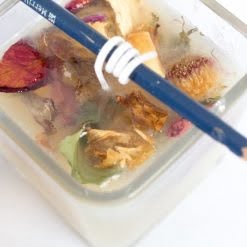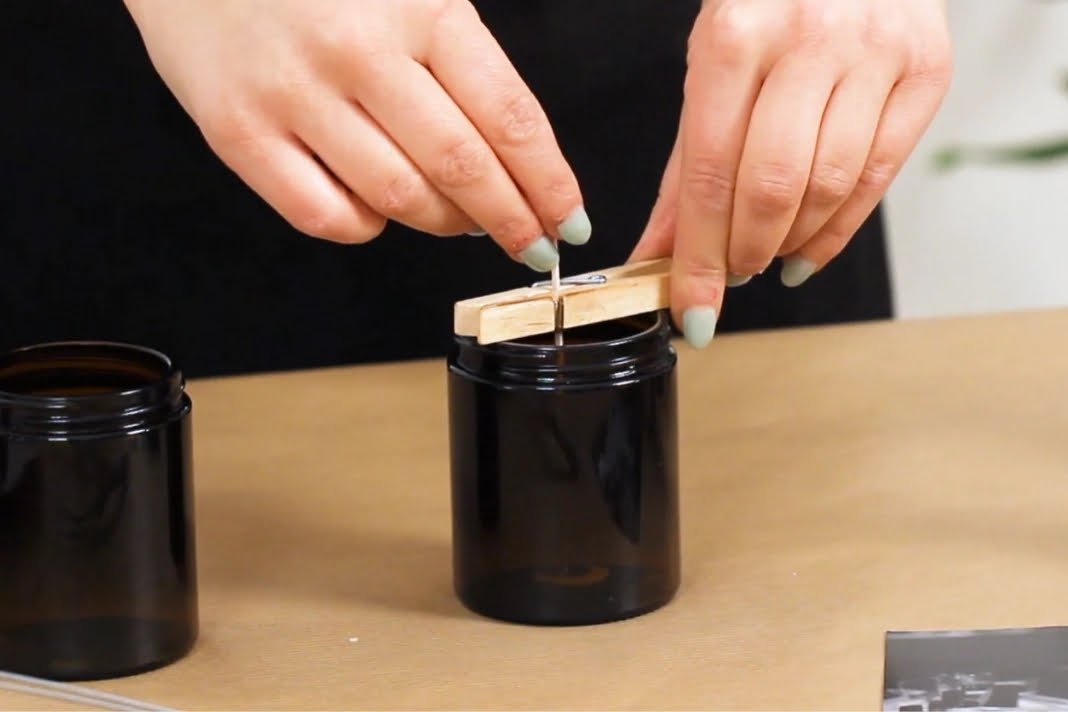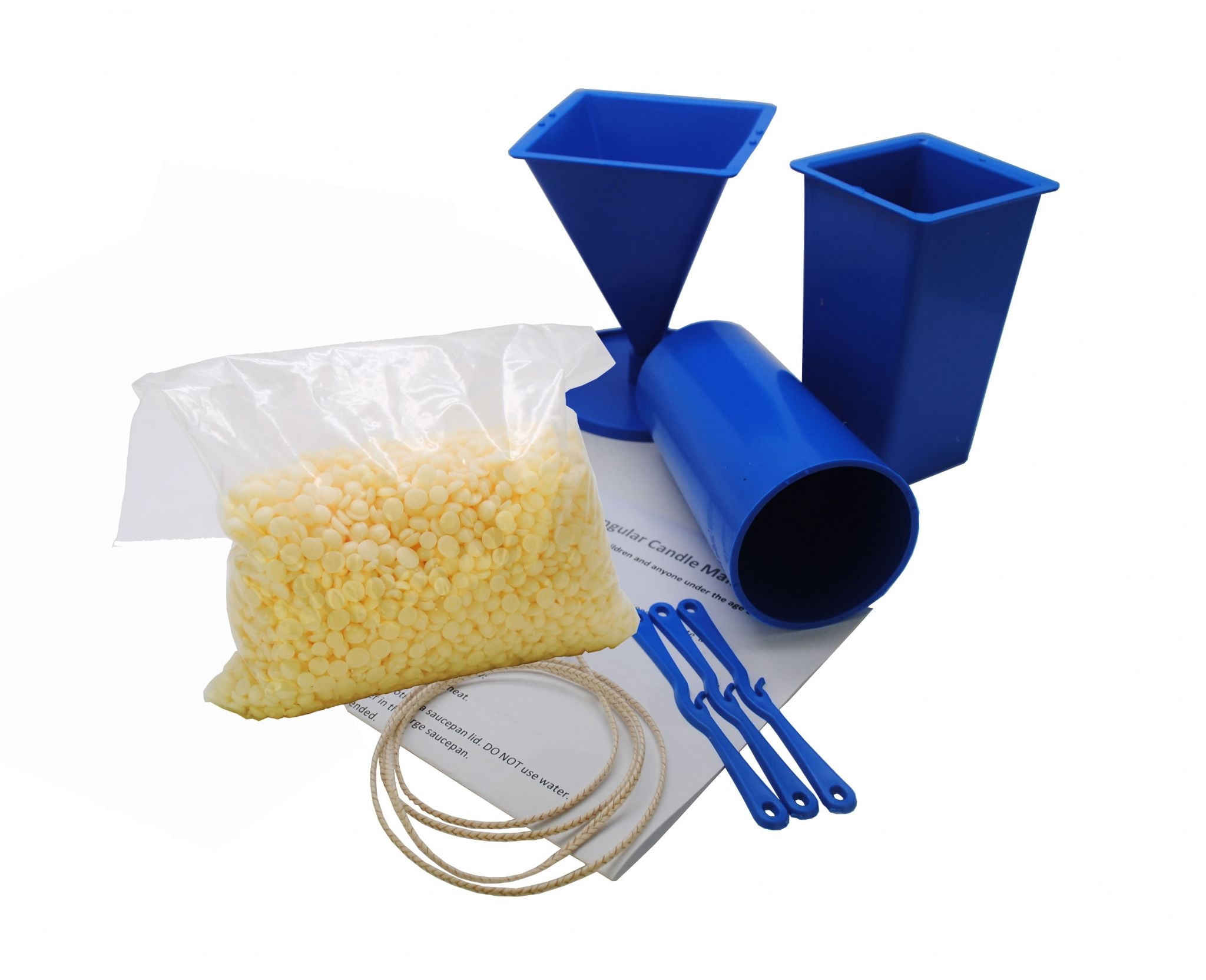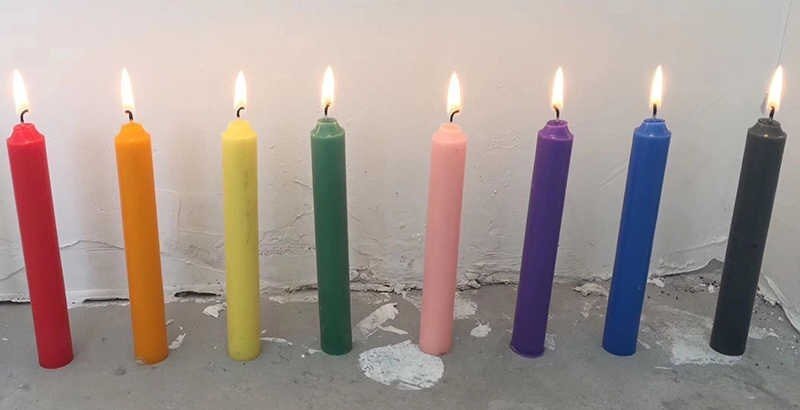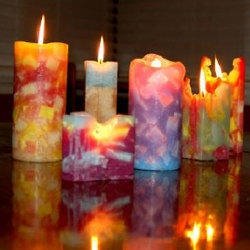Soy wax candle making temperature is a crucial factor in achieving the perfect candle. The right temperature can make all the difference in the quality, appearance, and fragrance of your soy wax candles.
From melting the wax to adding colorants and fragrance oils, maintaining the optimal temperature is essential at every stage of the candle making process. In this article, we will explore the significance of temperature control in soy wax candle making and provide valuable insights on how to achieve the perfect temperature for each step.
When it comes to creating soy wax candles, understanding the importance of temperature is key to producing high-quality products. Choosing the right equipment for temperature control is the first step towards mastering this craft. From double boilers to thermometers, having the proper tools can help ensure that you maintain the ideal temperatures throughout the entire candle making process.
One of the critical aspects of temperature control in soy wax candle making is knowing the optimal temperature range for melting soy wax. Different types of soy wax have specific melting points, and understanding these ranges is essential for achieving a smooth and even melt. Additionally, knowing when to add fragrance oils and colorants at precisely the right temperature can significantly impact the overall quality and scent throw of your candles.
By maintaining a consistent pouring temperature, you can also ensure that your candles set evenly and avoid issues such as sinkholes or frosting caused by rapid cooling. Throughout this article, we will delve into each stage of soy wax candle making and provide valuable tips for achieving precise temperature control.
Choosing the Right Equipment for Temperature Control
When it comes to making soy wax candles, temperature control is crucial for achieving the perfect result. Choosing the right equipment for temperature control is essential in ensuring that your candles turn out just the way you want them to.
One of the most important pieces of equipment for temperature control in soy wax candle making is a reliable double boiler. This will allow you to melt your soy wax gently and evenly without exposing it to direct heat, which could cause scorching or uneven melting.
In addition to a double boiler, a good quality thermometer is also essential for monitoring the temperature of your soy wax throughout the candle making process. Look for a thermometer that is specifically designed for candle making and can accurately measure temperatures within the optimal range for melting and pouring soy wax. Having the right equipment for temperature control will give you greater precision and confidence in your candle making process.
Another important piece of equipment for temperature control in soy wax candle making is a heat source that can be easily adjusted. Whether you are using a hot plate, electric stove, or another heating element, it should allow you to make small adjustments to maintain the optimal temperature range for melting, adding fragrance oils and colorants, and pouring your candles.
It’s worth investing in high-quality equipment that will give you greater control over the temperature throughout the entire candle making process.
The Optimal Temperature Range for Melting Soy Wax
Melting soy wax at the right temperature is crucial to ensure that your candles turn out with the best possible quality. The optimal temperature range for melting soy wax is between 170°F and 185°F. This range allows the soy wax to fully melt without being overheated, which can affect its texture and burn quality.
It is important to use a reliable kitchen thermometer to monitor the temperature of the soy wax as it melts. Stirring the wax occasionally can help distribute the heat evenly and prevent any hot spots. Keeping the wax within the recommended temperature range will also help preserve its natural properties, such as its fragrance retention and clean burn characteristics.
Exceeding the recommended temperature range for melting soy wax can cause discoloration, loss of fragrance, and even potential fire hazards. On the other hand, if the wax is not heated enough, it may not blend properly with fragrance oils or colorants. Therefore, maintaining the optimal temperature range for melting soy wax is essential for successful candle making.
| Optimal Temperature Range for Melting Soy Wax | 170°f – 185°f |
|---|---|
| Importance of monitoring temperature with a kitchen thermometer | Ensures even distribution of heat and preservation of natural properties |
| Potential consequences of exceeding recommended temperature range | Discoloration, loss of fragrance, fire hazards |
| Consequences of not heating wax enough | Poor blending with fragrance oils and colorants |
Adding Fragrance Oils and Colorants at the Right Temperature
Understanding the Fragrance Oil and Colorant Temperature Criteria
When it comes to adding fragrance oils and colorants to your soy wax candles, temperature plays a crucial role in ensuring that the final product is of high quality. Both fragrance oils and colorants have specific temperature criteria for optimal performance and scent throw. It is important to understand these criteria in order to achieve the desired results in your candle making process.
The Right Temperature for Adding Fragrance Oils
The ideal temperature for adding fragrance oils to melted soy wax is typically between 140°F and 185°F. This temperature range allows the fragrance oil to properly disperse and bind with the wax, resulting in a strong and long-lasting scent when the candle is burned. Exceeding this temperature range can lead to the evaporation of the fragrance oil or its degradation, impacting the overall quality of the candle’s scent.
Colorant Temperature Considerations
Similarly, when adding colorants to your soy wax, it is important to do so at the right temperature. Most liquid dye colorants are best added at a temperature between 160°F and 180°F, while dye chips or blocks may require slightly higher temperatures for proper dispersion. Adding colorants at these recommended temperatures ensures even distribution and consistent coloring throughout the candle.
By adhering to the recommended temperature ranges for adding fragrance oils and colorants, you can ensure that your soy wax candles not only look beautiful but also fill a room with a delightful scent when lit. Paying attention to these small details will elevate the quality of your homemade candles and result in satisfied customers who appreciate high-quality products.
Maintaining the Ideal Pouring Temperature for Soy Wax
Importance of Pouring Temperature
The pouring temperature determines how the soy wax will solidify and set, ultimately affecting the texture and appearance of the candle. If the wax is poured at too high of a temperature, it may result in uneven cooling, sinkholes, or frosting. On the other hand, pouring at too low of a temperature can cause adhesion issues and an uneven surface.
Recommended Ideal Pouring Temperature
The ideal pouring temperature for soy wax candle making is typically between 130°F to 150°F (54°C to 65°C). This temperature range allows for smooth and even dispersion of fragrance oils and colorants while promoting proper adhesion to the container. However, it is essential to consider the specific type and brand of soy wax being used as different waxes may have slightly different optimal pouring temperatures.
Tips for Maintaining Ideal Pouring Temperature
To maintain the ideal pouring temperature, it is crucial to use a reliable thermometer throughout the candle making process. Additionally, ensuring that your work area is at a consistent room temperature can help prevent rapid changes in pouring temperature due to external factors.
Proactively monitoring and adjusting the pouring temperature based on these factors can significantly improve the overall quality of your soy wax candles. By paying close attention to maintaining the ideal pouring temperature, you can produce professional-looking candles with a smooth finish every time.
By understanding how essential maintaining an ideal pouring temperature is and following these tips for achieving it, you can enhance your soy wax candle making experience and create high-quality products with ease.
The Impact of Temperature on Candle Cooling and Setting
The process of candle cooling and setting is crucial in soy wax candle making as it greatly impacts the final look and performance of the candle. After pouring the melted soy wax into your containers, allowing it to cool and set properly is essential for a high-quality finished product. The temperature at which this cooling and setting process occurs can affect the appearance, texture, and burn time of your candles.
Once you have poured the melted soy wax into your containers, it is important to allow it to cool at room temperature without any sudden changes in temperature. Rapid cooling due to exposure to cold drafts or placing the candles in a cooler environment can result in uneven cooling and potential cracking of the candle surface. On the other hand, too slow of a cooling process can lead to rough surfaces or frosting on the candles.
The ideal temperature range for cooling and setting soy wax candles is typically between 50-80°F (10-27°C). This allows for a gradual solidification of the wax, resulting in a smooth and even finish.
It is important to monitor the ambient temperature where your candles are placed as well as any fluctuations that may occur throughout the cooling process. By controlling these factors, you can ensure that your soy wax candles cool and set properly, ultimately producing high-quality finished products.
| Temperature | Effect on Candles |
|---|---|
| Rapid Cooling (Below 50°F/10°C) | Uneven cooling, potential cracking |
| Slow Cooling (Above 80°F/27°C) | Rough surfaces or frosting |
Troubleshooting Temperature-Related Issues in Soy Wax Candle Making
When making soy wax candles, maintaining the right temperature is crucial to achieving a successful outcome. However, it’s not uncommon to encounter temperature-related issues during the candle-making process. Here are some common problems you might encounter and how to troubleshoot them:
1. Frosting: Frosting occurs when the wax cools too quickly, causing a hazy or frosted appearance on the surface of the candle. To troubleshoot this issue, try pouring the wax at a slightly higher temperature and allowing it to cool more slowly. You can also wrap the candles in a towel or blanket after pouring to insulate them and prevent rapid cooling.
2. Sinking: Sinking happens when there is a depression or crater in the center of the candle as it cools and sets. This can be caused by pouring the wax at too high of a temperature or by adding fragrance oils that are not compatible with soy wax. To troubleshoot this issue, try pouring at a lower temperature and using fragrance oils specifically formulated for soy wax candle making.
3. Rough or Grainy Texture: If your candles have a rough or grainy texture, it may be due to cooling too quickly or using old or improperly stored soy wax. To troubleshoot this issue, ensure that you are storing your soy wax properly in a cool, dry place and that you are allowing it to cool at the optimal temperature range for soy wax candle making.
By troubleshooting these common temperature-related issues in soy wax candle making, you can improve your candle-making skills and achieve better results with each batch of candles you create. Remember that practice makes perfect, so don’t be discouraged if you encounter some challenges along the way. With time and experience, you’ll become more confident in controlling the temperature throughout the entire candle-making process.
Additional Tips and Tricks for Perfecting Soy Wax Candle Making Temperature Control
In conclusion, mastering the art of soy wax candle making temperature is crucial for creating high-quality, professional-looking candles. Whether you are a beginner or an experienced candle maker, understanding the importance of temperature control is key to achieving the desired results in your candle making process.
Choosing the right equipment for temperature control is essential in soy wax candle making. Investing in a good quality thermometer and heat source will help you maintain the optimal temperature range for melting soy wax, adding fragrance oils and colorants, and pouring the wax into containers. This attention to detail will ensure that your candles have a smooth finish and even burn.
Maintaining the ideal pouring temperature for soy wax is critical for achieving a clean, flawless appearance in your finished candles. By carefully monitoring and adjusting the temperature throughout the different stages of candle making, you can minimize issues such as frosting, sinkholes, and poor scent throw.
Additionally, understanding how temperature impacts candle cooling and setting will allow you to troubleshoot any potential problems that may arise. In essence, with practice and attention to detail, you can perfect your soy wax candle making temperature control to consistently produce beautiful, high-quality candles that will delight both yourself and your customers.
In summary, paying close attention to every aspect of temperature control in soy wax candle making will ultimately lead to success in producing beautiful, professional-looking candles. By following these additional tips and tricks for perfecting soy wax candle making temperature control, you can enhance your skills as a candle maker and take pride in creating candles that meet high standards of quality and aesthetic appeal.
Frequently Asked Questions
What Temperature Do You Pour Soy Wax for Candles?
The recommended temperature for pouring soy wax for candles is typically between 110-135°F. This allows the wax to cool and set evenly, preventing any cracking or frosting on the surface of the candle.
What Happens if You Pour Soy Wax Too Hot?
If you pour soy wax at too hot of a temperature, it can negatively affect the quality of the candle. This may lead to issues such as sinkholes, uneven texture, or a weaker fragrance throw. It’s important to let the wax cool to the appropriate temperature before pouring.
What Temperature Do You Add Fragrance to Soy Wax 464?
When adding fragrance to soy wax 464, the ideal temperature is around 185°F. This allows the fragrance oil to properly disperse and bind with the wax without getting burned off by excessive heat. Adding fragrance at this temperature ensures a strong and long-lasting scent in the finished candle.

Welcome to my candle making blog! In this blog, I will be sharing my tips and tricks for making candles. I will also be sharing some of my favorite recipes.

